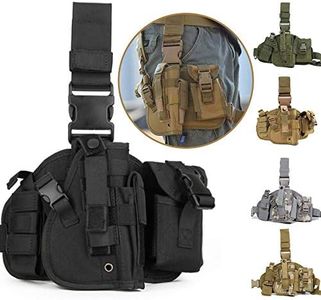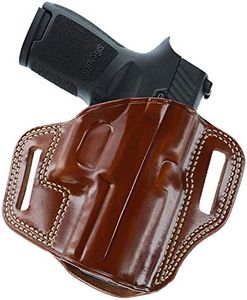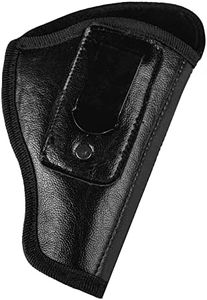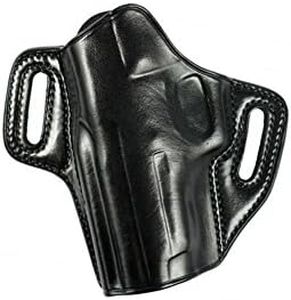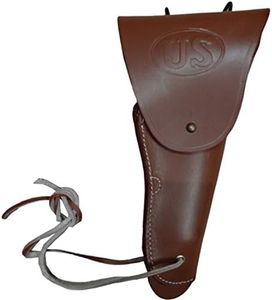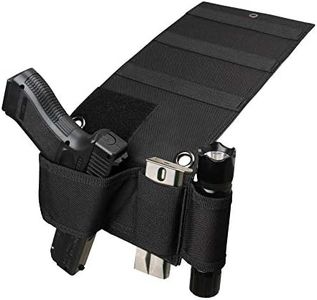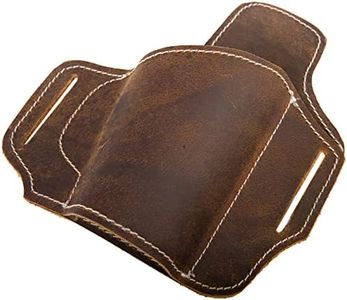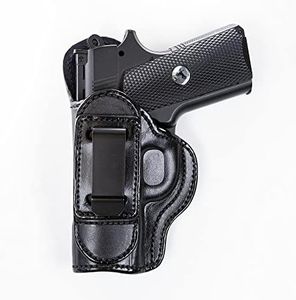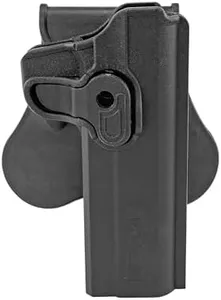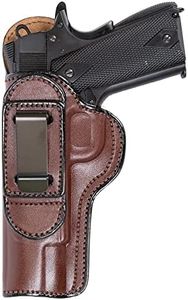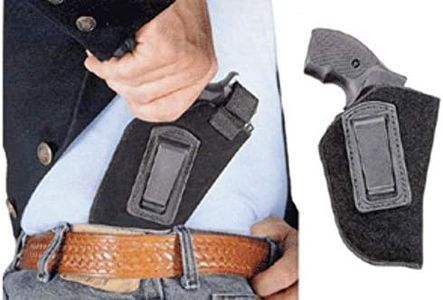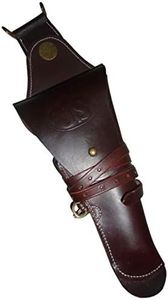We Use CookiesWe use cookies to enhance the security, performance,
functionality and for analytical and promotional activities. By continuing to browse this site you
are agreeing to our privacy policy
10 Best 1911 Holsters
From leading brands and best sellers available on the web.Buying Guide for the Best 1911 Holsters
Choosing the right 1911 holster is essential for safety, comfort, and accessibility. The holster you pick should securely hold your firearm, fit your body style and lifestyle, and allow for a smooth and reliable draw when needed. Since everyone has different preferences and uses—from concealed carry to target shooting—it's critical to match the holster style, material, and features to your specific situation and daily routine.Holster TypeHolster type refers to the design and placement style, such as inside-the-waistband (IWB), outside-the-waistband (OWB), shoulder, ankle, or appendix carry. The type is important because it affects both comfort and concealment. IWB holsters are great for concealed carry, resting inside your pants, while OWB holsters are best for open carry or range use, riding outside your pants. Shoulder and ankle holsters cater to specific needs like deep concealment or comfort when seated for long periods. To pick the right one, think about your primary activity—such as everyday concealed carry, range use, or home defense—and choose a type that matches how and where you'll wear your holster most.
Retention MechanismRetention mechanism refers to how securely the holster holds your 1911 in place. Retention is crucial for safety, preventing accidental drops or unauthorized access. Basic holsters rely on friction, while others use mechanical features like straps, thumb breaks, or locking devices. Lower retention offers faster draws for experienced shooters, but less security, while higher retention is safer but may slow your draw. If you plan to carry daily in public spaces, consider holsters with at least a moderate retention mechanism; for range use, light retention may suffice.
MaterialHolster material determines comfort, durability, and how well your gun is protected. Common materials include leather, Kydex (a type of molded plastic), hybrid combinations, and nylon. Leather is comfortable and molds to your body over time, but can be pricier and requires maintenance. Kydex is rigid, lightweight, and preserves holster shape, offering easy re-holstering; it may not be as comfortable against the skin. Nylon is affordable and lightweight, but less durable. Choose the material that aligns with your priorities: for comfort during long wear, leather or hybrid may work best; for durability and consistent draws, consider Kydex.
AdjustabilityAdjustability means how much you can customize the fit and angle (cant), retention tension, and ride height of your holster. Adjustability matters because it allows you to tailor the holster to your draw style, body type, and preferred carry position. Some holsters allow you to change the angle or how high they sit on your belt, making them more versatile. If you're not sure of your ideal carry setup, or if you like to experiment, look for a highly adjustable holster to fine-tune comfort and accessibility.
Comfort FeaturesComfort features include padded backing, sweat guards, smooth edges, and breathable materials. These are important for reducing irritation during extended wear, especially for concealed carry. Holsters with comfort features help prevent chafing, absorb moisture, and fit naturally against your body. If you plan to wear your holster for long hours, prioritize comfort-enhancing details to ensure you don't end up avoiding carrying because of discomfort.
Fit and CompatibilityFit and compatibility refer to how well a holster is designed for your specific 1911 model and any modifications it might have (like rail attachments or extended barrels). A good fit ensures safety and a fast, reliable draw, preventing the gun from shifting or snagging. Always check that the holster is made for your exact barrel length and any extra features your gun has. Choose a model-specific holster for the best performance, or a well-reviewed universal holster if you have multiple firearms.
